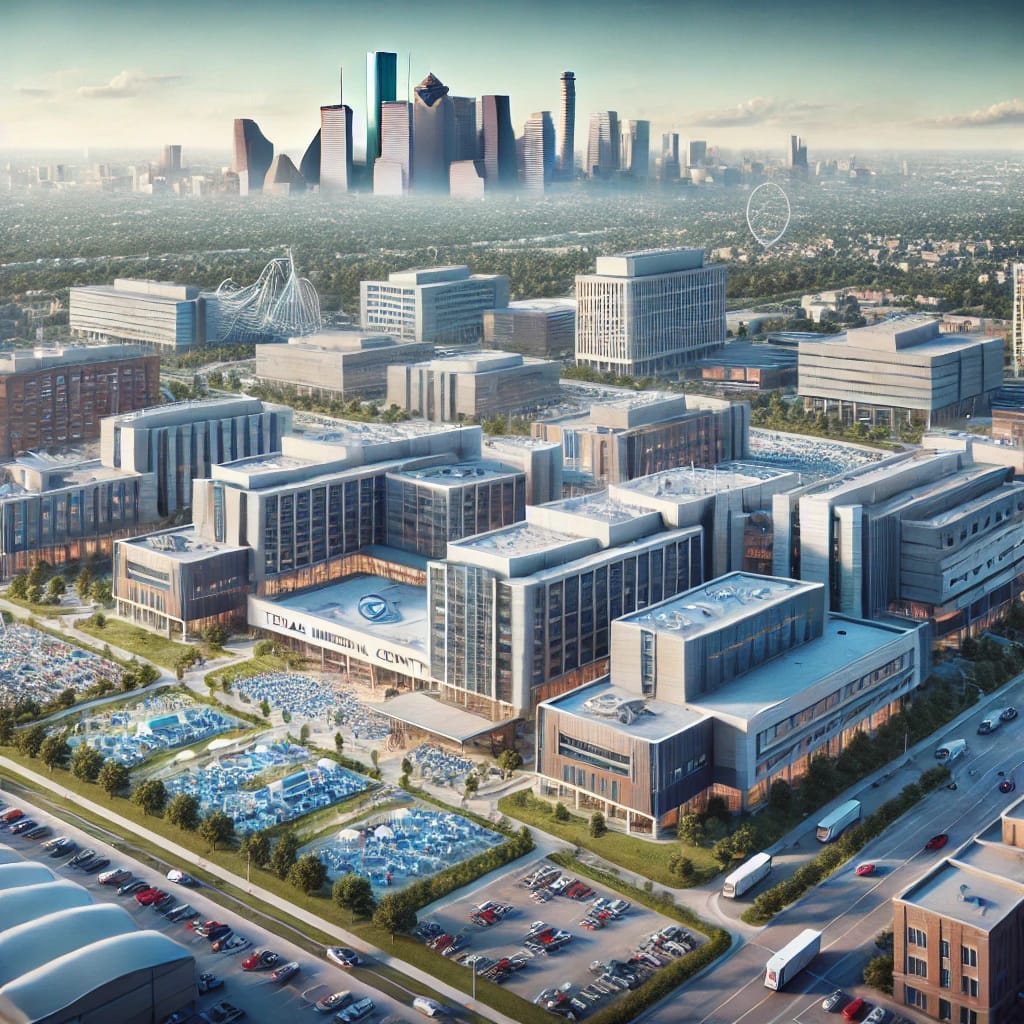
The Texas Medical Center (TMC) in Houston stands as a global leader in healthcare, education, and research. With over 60 medical institutions and hospitals, TMC attracts patients, students, and professionals from around the world. But how did it grow from humble beginnings to become the largest medical complex in the world? Let’s explore the history and evolution of this extraordinary center.
The Early Vision: Laying the Foundations
The idea for the Texas Medical Center began in the 1940s. Houston was rapidly growing, and local philanthropist Monroe Dunaway Anderson envisioned a medical district that could meet the city’s healthcare needs. Anderson’s foundation provided the seed funding, helping the University of Texas establish the first institutions within the future medical center.

The early partners included Baylor College of Medicine, which relocated from Dallas to Houston, and the newly founded MD Anderson Cancer Center. These institutions set the stage for the medical district’s expansion.

Expansion Through Partnerships and Innovation
Throughout the 1950s and 60s, TMC attracted numerous medical institutions. The addition of specialized hospitals, including Texas Children’s Hospital and the Houston Methodist Hospital, made TMC a hub for world-class healthcare. These partnerships allowed the center to diversify its services, meeting the needs of both local residents and international patients.


During this time, the center also became a leader in medical education and research. The collaborative environment fostered groundbreaking innovations, including advances in heart surgery and cancer treatment.
Landmark Achievements in Medicine
The Texas Medical Center has achieved many “firsts” in the medical field. One of the most famous breakthroughs came in 1968, when Dr. Denton Cooley performed the world’s first artificial heart transplant at Houston’s Methodist Hospital. This pioneering spirit continues today, as TMC leads research efforts in fields like genomics, neurology, and oncology.

TMC is also home to some of the most advanced cancer treatment facilities in the world. MD Anderson Cancer Center consistently ranks among the top cancer hospitals, attracting patients from across the globe seeking specialized care.
Research and Education: Preparing the Next Generation
TMC is not just a collection of hospitals – it’s also a hub for education and research. With multiple universities and medical schools, including Baylor College of Medicine and the University of Texas Health Science Center, the medical center plays a vital role in training future healthcare professionals.

TMC’s research institutions have made significant contributions to public health, including breakthroughs in immunotherapy, infectious disease control, and cardiovascular health. The center’s collaborative approach ensures that students, researchers, and clinicians work together to solve complex medical challenges.
Meeting the Challenges of Healthcare in the 21st Century
The Texas Medical Center has adapted to meet modern healthcare challenges, from pandemic response to advancements in telemedicine. TMC was at the forefront of COVID-19 research and vaccination efforts, demonstrating its ability to respond to public health crises.
The center is also investing in infrastructure, with the TMC3 Innovation Campus poised to become a global leader in life sciences. This new facility aims to bring together researchers, entrepreneurs, and healthcare professionals to develop the next generation of medical technology.

The Impact on Houston and Beyond
The Texas Medical Center is not just a local institution – it has a global impact. Each year, millions of patients from around the world visit TMC for advanced treatments. The center also plays a critical role in Houston’s economy, contributing billions of dollars annually and providing thousands of jobs.
TMC’s commitment to healthcare innovation ensures that it remains at the forefront of medical advancements, shaping the future of medicine for generations to come.